PinotFile: 11.31 September 28, 2018
|
Fiddlehead Cellars 30-Year Anniversary: Drink ‘728’ on 7/28
The theme of the event, “Drink ‘728’ on 7/28,” refers to the 7.28-mile marker at the entrance to Fiddlestix Vineyard and one of the Fiddlehead Fiddlestix Vineyard Pinot Noirs produced with the name ‘728.” Kathy’s cohost was her husband, Tom Doyle, an attorney practicing in Northern California who resides with Kathy at their second home in Davis, California. They are pictured together below:
 Kathy launched Fiddlehead Cellars 30 years ago at a time when there were very few women winery owners and winemakers. She was mentored by several exceptional winemakers from California’s North Coast and graduated from UC Davis with a degree in enology and viticulture. In 1989, she created a winery like no other. Kathy searched for a catchy name for her winery by exploring many books, but the name, Fiddlehead, came to her after nurturing some Fiddlehead ferns in her garden that were just unfurling. She loved the visual connection of the curled fern emerging and her own curly hair. The ‘fiddle’ theme is evident in her nom de plume, “Head Fiddle.” As “Head Fiddle,” Kathy deftly manages the business matters of the winery while remaining completely engaged as a winemaker, marketer, winegrower, always adapting her pre-med Midwest roots to the wine business. Her estate vineyard, Fiddlestix, is a prime example of sustainable farming. The vineyard was planted in 1998 entirely to Pinot Noir and is managed by Coastal Vineyard Care. Located on the north side of Santa Rosa Road across the highway from Sanford & Benedict Vineyard, the 94 producing acres are divided into 35 mini-blocks representing different combinations of seven clones (Pommard 4 & 5, Dijon 113, 115, 667, and 777, a Swan selection), three rootstocks, and various elevations, exposures and well-draining soil combinations. Spacing is tight at 1,556 vines per acre with VSP trellising and primarily north-south facing rows throughout. The first wine offered from Fiddlestix Vineyard was the 2000 vintage. More recently, some Grüner Veltliner was planted at Fiddlestix Vineyard and the first wine offered from the 2014 vintage.
 Fiddlehead currently retains about 15% of Fiddlestix Vineyard’s output and produces about 5,000 cases of Pinot Noir and Sauvignon Blanc wines, and small amounts of Grüner Veltliner (since 2014), Rosé (since 2004), sparkling wine (since 2008) and sweet wine annually from Fiddlestix Vineyard and sourced grapes in Santa Barbara County and the Willamette Valley of Oregon. Production is distributed primarily through the tasting room in Lompoc, direct to consumer through a mailing list, and to national retailers. The wines are not generally submitted to the wine press for review, instead encouraging consumers to visit the winery and tasting room and interact with Kathy and her staff to fully appreciate Kathy’s enthusiasm and love of winemaking and her wines of elegance, expression of place and age-worthiness. Her tasting room is open Friday-Sunday and weekday by appointment. I highly recommend a tasting. Visit www.fiddleheadcellars.com for more details. Pinot Noir is offered in several bottlings from Fiddlestix Vineyard: “728,” “Lollapalooza” (a barrel selection), “Burtie Baby” (a 7 barrel selection, Single Clone wines, and “Doyle,” (a single outstanding barrel only offered in special vintages as an ode to Kathy’s Husband Tom with artist series labels). The first fifteen years she made her Oregon Pinot Noir at Yamhill Valley Vineyards located off of “Oldsville Road,” and then beginning in 2000, started trucking grapes in refrigerated haulers to Lompoc for vinification. Since 2006, Kathy has sourced Pinot Noir grapes from Alloro Vineyard in the Chehalem Mountains of the Willamette Valley and based on my tasting of several vintages of her Willamette Valley Pinot Noirs since this is the most outstanding Oregon fruit source. She offered the “Oldsville Reserve” Oregon Pinot Noir for many years made from three Oregon vineyards (Elton, Seven Springs and Yamhill Valley), but now sources grapes exclusively from Alloro Vineyard. Sta. Rita Hills is not suitable for successful growing Sauvignon Blanc so Kathy sources from vineyards more inland in warmer Santa Ynez Valley area sites. The Press Tasting was a somewhat hurried affair as there were 32 wines from vintages 1989 to 2014 to taste along with Kathy’s commentary and less than an hour to do it. Therefore, I can only offer some general impressions. Inquire to the winery about the availability of library wines for purchase.
1. The Sauvignon Blanc wines were noteworthy for their age ability. The Santa Ynez Valley Sauvignon Blancs from 1993, 1995 and 1998 were all fresh and enjoyable with the 1998 from magnum showing the best and with the longest finish. The ‘Gooseberry’ Santa Barbara County Sauvignon Blancs from 2001, 2005, 2007 and 2010 vintages were vinified in stainless steel and showed the most aromatic intensity and edginess from bright acidity. The ‘Honeysuckle’ Santa Barbara County Sauvignon Blancs from 2001, 2005 and 2009 were more New World in style marrying more richness of fruit and plush textures with new oak barrel ageing. 2. The 1989 and 1993 Sierra Madre Vineyard Santa Maria Valley Pinot Noirs showed faded fruit and tertiary notes of tea, leather and cigar. They were still attractive wines soldiering on with excellent acidity.

3. The 2001 Lollapalooza Pinot Noir showed faded fruit and noticeable tannins. The 2002 and 2003 vintages of this wine were more alive with noticeable sap, yet fruit was fading and tannins stuck out a bit. 4. The 2007 Fiddlehead Twentieth Anniversary bottling from Fiddlestix Vineyard was a superb wine, with a generous attack, enviable mid palate intensity and wholesome finishing generosity. It was offered at the event at $54, a real steal for a library wine.

5. The 2012 Alloro Vineyard Willamette Valley Pinot Noir was one of my favorites among the Oregon Pinot Noirs. This is a stellar vineyard and I have written glowingly in the past about Pinot Noir produced from the vineyard. 6. The most impressive Fiddlehead wines tasted were the vertical of Doyle Pinot Noirs poured by Tom Doyle. Beginning with the 2002 vintage and including most years through 2012, these were very concentrated wines that made a statement and retained an alluring attraction in every bottle. Sometime around the 2007 vintage, it seemed Kathy altered her winemaking such that the obvious tannins found in the years prior were moderated and vintages from 2007 on were more to my preference. Tasting these wines with Tom was the highlight of my time at the event.

Tasting of newer Fiddlehead releases:
2017 Fiddlehead Pink Fiddle Fiddlestix Vineyard Sta, Rita Hills Rosé of Pinot Noir 13.0% alc., pH 3.31, TA 0.60, 273 cases, $23. Not a saignée, but rather a purposeful rosé produced from distinctive blocks at Fiddlestix Vineyard in the nascent stage of the vintage. Each block and clonal selection (113, Pommard 4, 667) is targeted specifically for this wine by expressing early flavor maturity at lower sugar. Less than 24-hour skin contact. Gentle de-stemmed, free-run juice and light pressed skins, cold fermented in stainless steel to dryness. Partial malolactic fermentation. · Watermelon pink color in the glass. The aromatics are highly enticing, featuring scents of cut apple, strawberry, raspberry, red current, and watermelon. The flavors echo the aromas with added flavors of red cherry and cranberry. Brisk, clean, dry and vivacious with welcome richness of flavor and spirited acidity. Score: 91
2013 Fiddlehead Seven Twenty Eight Fiddlestix Vineyard Sta. Rita Hills Pinot Noir 13.7% alc., pH 3.31, TA 0.6659, 2,880 cases, $44. Grapes harvested at night, clones 115, 113, Pommard 4, 667, 777 and Pommard 5 co-fermented in small vats after de-stemmed. Aged in French oak barrels, 35% new. · Moderately dark garnet color in the glass. The nose leads with aged aromas of black cherry, leather, game, black currant and oak spice. Nicely balanced, with middleweight flavors of dark cherry, blueberry and black currant. The wine seems to have arrived at early maturity and shows a bit of rusticity and earthiness. The tannins are sleek, there is good acidity and some finishing length. Score: 90
 2012 Fiddlehead Lollapalooza Fiddlestix Vineyard Sta. Rita Hills Pinot Noir 13.5% alc., pH 3.54, TA 0.589, 307 cases, $80. The most outstanding barrels in the vintage as selected by Kathy Joseph and her winemaking team. Sourced from 19 blocks throughout Fiddlestix Vineyard and included multiple pick dates. Grapes were harvested at night, meticulously hand-sorted and 100% de-stemmed. Clones were primarily 777, followed by 667 and Pommard 4 and 5. Free-run juice only was aged 15 months in French oak barrels, 36% new. · Dark garnet color in the glass. Nicely perfumed with fresh aromas of black cherry and spice. Discreetly rich in a mid weight plus style, offering layers of dark red and black fruits with a compliment of spice and oak. The suave, dry tannins lead to a satiny texture and the generous finish is notable. Considerably more special when tasted later in the day from a previously opened bottle. Score: 93
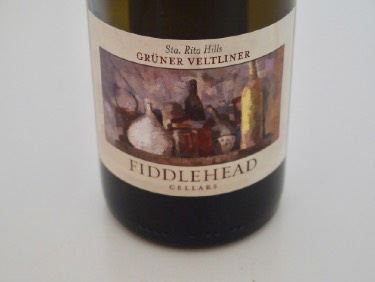 2015 Fiddlehead Fiddlestix Vineyard Sta. Rita Hills Grüner Veltliner 13.0% alc., pH 3.05, TA 0.66, 356 cases, $28. Harvested from 2.8-acres planted at Fiddlestix Vineyard. Grapes were harvested at night and handsorted. Whole cluster pressed to tank, cold-settled and racked to a majority of neutral French oak barrel where it was aged on its less. The remaining 25% was cold fermented in tank. Both fractions were non-malolactic fermented and aged separately for 10 months after which they were married together just before bottling. · Pale platinum color in the glass. Gracious aromas of lemon-lime, parchment, wax and nuts. Bright and crisp on the palate, infused with flavors of lemon-lime, pear, vanilla, cream soda and nuts. Very polished, with refreshing acidity. Still fine when re-tasted the following day from a previously opened and re-corked bottle. I do not have much experience with this varietal so I have few benchmarks for comparison, but this was an outstanding wine and I presume a superb example of this varietal. Score: 92
Ramey Embraces Russian River Valley
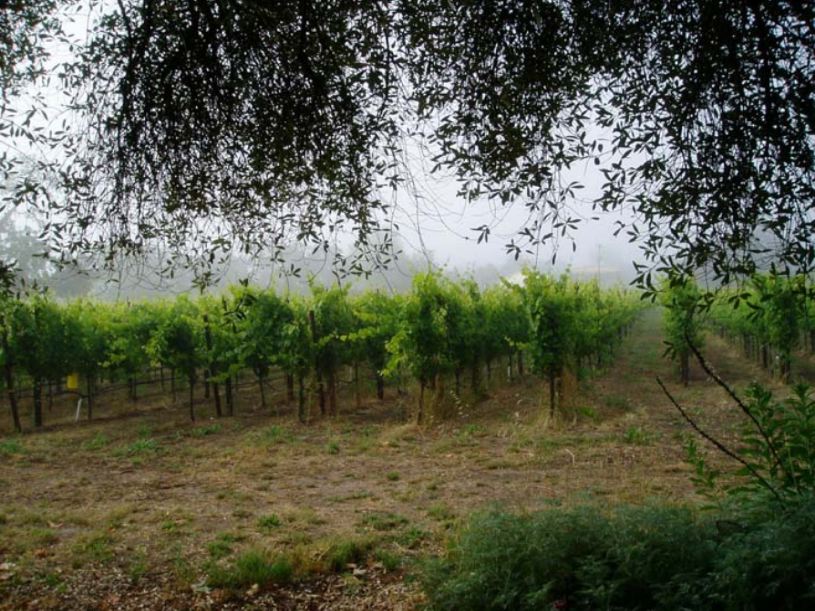 David Ramey, owner and founder of Ramey Wine Cellars, believes the marine influence gives fresher, livelier Chardonnays and provides the right conditions for growing Pinot Noir. He points out that the Russian River Valley is a warm spot in a cool area, much cooler than Napa Valley or even Alexander Valley to the north, but with enough warmth after the fog burns off to give an extra richness to wines compared with the Sonoma Coast. Also, the Goldridge soils are ideal for cool climate grapes. Ramey’s portfolio has focused on Chardonnay for years using grapes from notable sources such as Ritchie Vineyard, Hyde Vineyard, and Hudson Vineyard. More recently, in 2012, he bought Westside Farms, a beautiful estate located on Westside Road in the middle reach of the Russian River Valley with 42 acres planted mainly to Chardonnay. He crafted the first ever Estate Chardonnay from this vineyard in the 2014 vintage. A winery and hospitality center is planned for this site. Ramey also added a single vineyard Chardonnay from Rochioli Vineyard in the 2015 vintage. Ramey’s style of Chardonnay walks the line between fruit richness and wholesome acidity. Consider decanting the Chardonnays as they benefit from aeration. The wines take a while to open up, but when they do - Oh Boy! Wines are available for purchase on the winery’s website. Some Chardonnays are bottled in magnum and double magnum format. Ramey Wine Cellars is open for tasting by appointment Monday through Saturday in Healdsburg ($50). Visit the website at www.rameywine.com for further details. A “Wander Westside” wine and food experience is available: stay at Hotel Healdsburg, elevated experiences at Ramey Wine Cellars, Gary Farrell Winery and MacRostie Winery, with or without luxury transportation to and from the Hotel Healdsburg and wineries, a chef’s tasting menu dinner for two at Dry Creek Kitchen paired with wines from each property, and a daily gourmet breakfast and valet parking.
2016 Ramey Russian River Valley Pinot Noir 14.5% alc., 1,623 cases, $50. Released August 2018. Grapes sourced from De La Montanya and Bucher vineyards. Harvest Brix average 23.9º. Tank fermented with native yeast and native malolactic fermentation in barrel. Aged on the lees with monthly stirring for 14 months in French oak barrels, 49% new. Lightly fined with egg white and bottled without filtration. · Moderate garnet color in the glass. Aromas of Bing cherry, cardamom spicer, wine cave, smoke and forest floor. Light to mid weight in style, offering a slightly austere core of black cherry fruit backed by oak-inspired tastes of tobacco and smoke. Modest, silky tannins and pleasingly sleek. Score: 89
2015 Ramey Rochioli Vineyard Russian River Valley Chardonnay 14.5% alc., 747 cases, $65. Released August 2018. A blend of 85% clone 4 (1995) and 76 (1995 and 1998) and 15% from clone 5 (1989) and Allen Vineyard 76 (2001 and 2005). Harvest Brix 23.1º. Gentle whole cluster pressed, native yeast and full native malolactic fermentations in barrel. Aged on the lees with lees stirring 20 months in French oak barrels, 23% new. Fined and then bottled without filtration. · Light golden yellow color in the glass. The wine opens slowly in the glass revealing aromas of lemon pie, toast, gun barrel and slight struck match initially. More fruit-driven when sampled several hours after opening. Creamy in the mouth, with a delicious charge of lemon fruit dressed in toasty oak. Long in the mouth and finish with integrated acidity. Much more alluring several hours after opening, with oak folding into the background and fresh citrus and pear flavors coming to the front. Score: 94
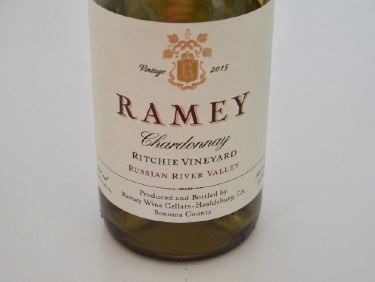 2015 Ramey Ritchie Vineyard Russian River Valley Chardonnay 14.5% alc., 898 cases, $65. Released August 2018. Old Wente selection. Harvest Brix 23.8º. Gentle whole cluster pressed. Native yeast and full native malolactic fermentations in barrel with lees stirring. Aged 20 months on the lees in French oak barrels, 21% new. Fined and then bottled after settling without filtration. · Moderately light golden yellow color in the glass. Mild reduction upon opening, resolving over time as aromas of lemon-lime and a hint of espresso emerge. Impressive citrus high notes with just a hint of caramelized and toasted oak. Only slightly creamy in the mouth with noticeable persistence on the finish. Adept balance between rich fruit and vibrant acidity. When tasted several hours after opening, this wine really knocked my socks off. Score: 95
Thirty-Seven Wines
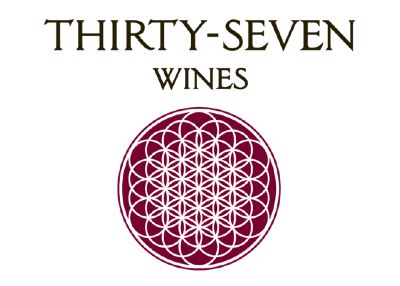 Proprietors Al and Lisa Brayton launched Paradise View Wines in 2003 and Thirty-Seven Wines in 2007. They latched onto winemaker Shane Finley, someone I have known and respected for many years. Shane developed his winemaking skills over many years through stints at Copain in the Russian River Valley, Torbreck Vintners in South Australia, Domaine Pierre Gaillard in the Northern Rhone, Paul Hobbs Winery, Kosta Browne Wines and Lynmar Estate. In 2013, he became the winemaker at Thirty-Seven Wines. The wines are produced and bottled in Santa Rosa. The Thirty-Seven Wines portfolio includes multiple varietals including Pinot Noir and Chardonnay. The reason I am featuring the wines in this issue is that they represent excellent value. The wines are sold through a mailing list and online through the winery’s web store at www.thirty-sevenwines.com.
2015 Thirty-Seven Sonoma Coast Pinot Noir 14.4% alc., 270 cases, $26. 5-day cold soak, 14- day skin contact, aged 15 months in French oak barrels, 30% new. · Moderately light garnet color in the glass. Inviting aromas of cherry, baking spice, sandalwood, earthy flora and a hint of tobacco. The flavor profile replicates the aromas in a mid weight style that has decent depth and excellent balance. Forward drinking with reserved tannins, a silky mouthfeel and a juicy red cherry finish. Score: 91
2015 Thirty-Seven Sonoma Coast Reserve Pinot Noir 14.6% alc., 275 cases, $40. 100% 667 clone. 5-day cold soak, 14-day skin contact, aged 15 months in French oak barrels, 80% new. · Moderate garnet color in the glass. More oak, tea and earth notes than fruit on the nose with a floral aspect as well. A mouth filling array of darker red and purple stone and berry fruits with a spice and floral tone in a mid weight plus style. Quite approachable for a reserve bottling, with modest tannins and a long and tangy finish. There is considerably more oak overlay than in the regular bottling and a hint of alcoholic warmth shows up on the finish. Score: 90
2015 Thirty-Seven Sonoma Coast Chardonnay 14.2% alc., 270 cases, $24. Aged 10 months in 33% concrete egg and 66% neutral French oak barrels. · Moderate golden yellow color in the glass. Intriguing aromas of lemon peel, pineapple, yellow applesauce, vanilla creme and spice. Expressive on the palate, with flavors of lemon, pineapple and banana. Slightly oily in texture, with a pleasing acid vibe and a tight, lemon zest finish. A terrific everyday Chardonnay priced right. Score: 90
2015 Thirty-Seven Sonoma Coast Reserve Chardonnay 14.6% alc., 195 cases, $36. 30-day primary fermentation in barrel, 100% malolactic fermentation. Lees stirred twice a month for 4 months after completion of primary fermentation. Aged 15 months on the lees in French oak barrels, 100% new. · Moderate golden yellow color in the glass. The nose opens slowly to reveal hitone aromas of lemon pudding, melon, nutty caramel and a hint of flint. Bigger, riper and creamier than the regular bottling, yet not as vibrant. Still, the boisterous flavors of pear, tropical fruits, citrus, caramel and honey satisfy. The 100% new oak is evident and there is a slight alcohol burn on the finish. For lovers of big, fruity, oaky Chardonnays that will not please those who prefer lean, aciddriven Chardonnays. Score: 89
Pinot Briefs
Labeling Changes Proposed by Willamette Valley Winemakers Oregon winemakers Ken Wright and David Adelsheim along with the Willamette Valley Wineries Association are leading the drive to reform Oregon’s wine labeling laws. The proposed changes are aimed at protecting the value of the Willamette Value name. Many wineries are omitting the Willamette Valley name off their labels in favor of using the sub- AVA title such as Dundee Hills and Chehalem Mountains. Adelsheim has put forward the requirement that wineries include the words “Willamette Valley” on their label if they also include their sub-AVA on the label (conjunctive labelling). Approval may take up to three years by the Oregon legislature. There are those who oppose conjunctive labelling laws including Tom Wark: www.fermentationwineblog.com/2018/09/willamettevalley- conjunctive-label-law-is-a-mistake/. Oregon Wine Label Dispute with Elouan Wines According to Wines & Vines, www.winesandvines.com/news/article/203507/Elouan-Wines-Draw-Ire-in-Oregon-Over-Labeling, Elouan, a brand owned by Joe Wagner of Meiomi fame, has been listing Willamette, Umpqua and Rogue valleys and even “Oregon Coast” on its seven Elouan and Willametter Journal Pinot Noir labels. The winery is not located in any of these AVAs or even Oregon, rather it is based in Rutherford, California as part of Copper Care LLC. A reader commented: “I can’t blame the Oregon trade organizations for their concern since the Wagner wines have no sense of place and show no traces of terroir at all! He is simply making wine to a recipe and using Oregon as a marketing device! That being said, they are damn good at wine recipes for the masses and are genius marketers!”
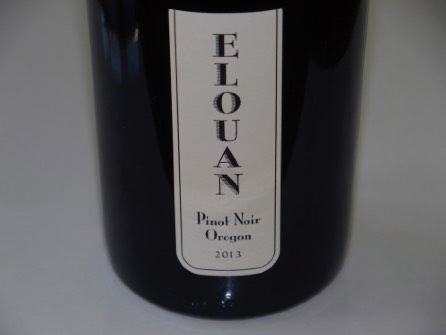 Iconic Sonoma County Viticulturist and Vintner Ulises Valdez Dies at Age 49 Ulises worked at various jobs growing up in Michoacán, Mexico until 1985, when he came to the United States at age 16. He made it into California on his third try and ended up in Cloverdale in Northern Sonoma County. He had not progressed past the third grade and did not speak English. One of eight children in his family, Ulises’ father had died at age 55 working the table grape harvest in Bakersfield, California when Ulises was 8 years old. He began working for a winegrower and achieved amnesty with the Immigration Reform and Control Act of 1986. That year, in exchange for a 50/50 partnership in a new company, Florence Vineyard Management, Valdez worked an entire season for free. He planted a 30-acre vineyard in Dry Creek Valley, working 18 hours a day. Upon return to Mexico, he married his childhood sweetheart and had four children. In 2003, Ulises bought Jack Florence Jr. out a time when they were farming 400 acres throughout Sonoma County. He then quickly expanded his viticulture knowledge and grew his company, Valdez & Sons Vineyard Management to over 1,000 acres, 100 acres of which are owned or leased, and started the Valdez Family Winery in 2004 specializing in Zinfandel and Pinot Noir. Ulises has grown grapes for many clients including Mark Aubert, Paul Hobbs, Jason Pahlmeyer, Arista Winery, Ram’s Gate Winery, Rivers-Marie, Three Sticks and Kosta Browne. Paul Hobbs wrote a heartfelt eulogy at www.paulhobbs.com/calling-the-pick-in-honor-of-ulises-valdez/. He said, “Ulises was one of the most gifted, knowledgeable and intuitive vineyard managers in California.” Vineyards that Ulises was known for included UV (Ulises Valdez), Lancel Creek and Silver Eagle. I met Ulises several years ago when he was assisting in the opening of Thomas George Estates Winery. He was instantly friendly, inviting myself and my companion to see his property on the east side of the Russian River Valley. He spent at least an hour with us talking wine, vineyards and his plans to build a winery on the property. He was unusually gregarious and revered by the Sonoma County winemaking community. Hudson Vineyard Winery Is Napa’s Newest Winery Lee Hudson is a noted winegrower, based on this 2,000-acre ranch in Napa’s Carneros region who opened a new winery on September 1, 2018. Known for the quality of Chardonnay grapes he grows, Hudson now has a winery to add to his tasting room and caves. Hudson has been farming the property since the early 1980s and made his own wines beginning in 2004. There are 200 planted acres including ten grape varieties on the Hudson working ranch that also includes a nursery, olive-tree orchards, gardens and a wood shop. Many of the fruits and vegetables grown on the ranch are sold at Oxbow (Hudson Greens and Goods run by his spouse Cristina). Read the full story of Lee Hudson’s success: www.napavalleyregister.com/wine/hudson-winery-opens-in-napa-s-carneros-region/ article_e0c8765c-c113-5111-8ba7-d72fe227e832.html. Over 30 wineries source grapes from Hudson many of which have bottled vineyard-designated Hudson Vineyard wines include Ram’s Gate, POE, Frank Family Vineyards, Kistler, Kongsgaard, Ramey, Failla, TOR, and Patz & Hall.
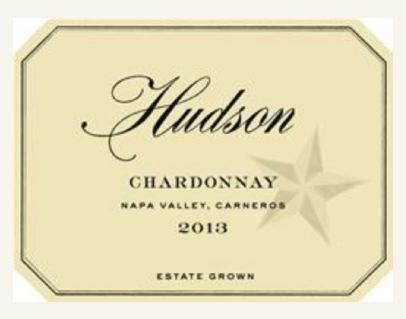 Martinelli Acquires Three Sisters and Charles Ranch Vineyards Martinelli Winery & Vineyards purchased 465 acres of Charles Ranch in the Fort Ross/Seaview AVA that includes two vineyards, the Charles Ranch Vineyard and Three Sisters Vineyard, a total of 27 planted acres. The Martinelli’s now own 19 vineyards in Sonoma County planted to 450 acres. 90% of the wine grapes they grow are sold to nearby wineries including Benovia Winery, Kosta Browne, Patz & Hall Winery, Ramey Wine Cellars and Williams Selyem. The Martinelli estate wines grown, produced and bottled by the winery. Newest Tasting Rooms in Northern California LIOCO opened a tasting room in downtown Healdsburg over Labor Day weekend. Tasting cost is $20-$50 and tastings are pre-paid (Tock reservation system) although walk-ins are accepted if space is available. Paul and Kathryn Sloan are now operating a tasting room for their Small Vines Pinot Noir and Chardonnay wines in a historic apple barn in Sebastopol. The tasting fee is $100 but is waives if you buy at least three bottles. Mount Eden only offered tastings to media and press during its first 73 years of existence. In early 2018, Mount Eden opened its Santa Cruz Mountains winery to consumers for a seated tasting of six wines and a tour of the scenic property. Long Meadow Ranch opened a tasting room in the Madrones complex in Philo in the Anderson Valley to feature Pinot Noir, Chardonnay and Pinot Gris wines. A second tasting room in St. Helena is located next to their restaurant, Farmstead. Winemaker Michael Browne Reclaims Estate Winery in Russian River Valley CIRQ., the winery created in 2009 by Kosta Browne founder Michael Browne, has taken back CIRQ., the project launched with small production, single vineyard Pinot Noirs from two vineyards while still at Kosta Browne. Today, the wines have a long waiting list and rarely appear in the marketplace. CIRQ. is now Michael’s singular focus and he is excited about having a winery of his own where he can be hands-on in every fine detail. The estate property is on a hilltop surrounded by a spectacular 360-degree view in the heart of the Russian River Valley. In 2020, the hilltop property will be ready to receive a very limited number of visitors. Michael looks to move away from the single-vineyard model, replacing it with blended wine from a select few unique vineyards in the Russian River Valley. To sign up for the mailing (waiting) list, visit www.cirq.com.
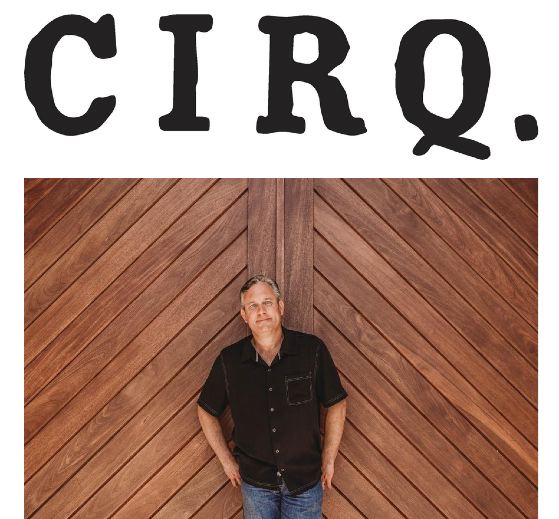 Davis Family Cruise Tickets Selling Out Soon The Davis Family Vineyards Cruise in May 2019 will be aboard the Oceania Cruises’ Marina and will visit ports in Spain, France, Monaco and Italy. There will be private group gatherings, receptions, seminars and a winemaker dinner with Guy Davis. In addition, there will be optional shore tours in Valencia, Palma de Mallorca, Toulon and Tuscany. All packages include free airfare. Click on this link for more detailed information: www.foodandwinetrails.com/davisfamily2019. 2018 Sonoma County Wine Auction Raises Record-Breaking $5.7 Million The live auction held at La Crema Estate at Saralee’s Vineyard was the culmination of a three-day affair. The auctions’ top wine-only lot was winemaker Michael Browne’s Lot No. 7, Back to the Future with CIRQ. that includes a collectable lot comprised of CIRQ. Estate library wines in mixed formats. It garnered $80,000. The Fund-ANeed paddle dedicated to rebuilding Sonoma County with a focus on housing solutions raised $2.5 million. Next year’s event will be held September 19-21 at La Crema Estate at Saralee’s Vineyard. Visit www.sonomacountywineauction.com. Pinot Noir Die-Hard’s Can Find Happiness in Napa Valley An article appeared in a San Francisco magazine about Napa Valley wineries worth visiting that specialize in Pinot Noir: www.modernluxury.com/san-francisco/story/the-pinot-noir-die-hards-tour-of-napa-valley. The wineries were Whetstone Wine Cellars, Robert Sinskey Vineyards, Hendry, Bouchaine Vineyards and School House Vineyard. I would add Hudson Winery, Etude Winery, El Molino Winery, Cuvaison, Ancien Wines, Aubert Wines, B. Kosuge Wines, Cakebread Cellars, Capiaux Cellars, Davies Vineyards, FEL Wines, Frank Family Vineyards, Long Meadow Ranch, Metzker Family Estates, Mi Sueno, Rogstad Wines, Sonoma-Loeb, Tulocay Wines, and ZD Wines among others. Refer to www.princeofpinot.com/wineries/appellation/ for a full listing of Napa Valley wineries producing Pinot Noir. Swigging Wine Not Advised I received some promotional material on Swig’s stemless vacuum insulated wine cups and champagne flutes. The Swig Wine Cup holds 12 oz of wine, essentially a half a bottle of wine and nearly 2½ standard drinks. The cup is opaque so you can’t tell how much wine is in the wine cup. The marketing information says that it is meant to be drunk (swigged) by one person and is directed at women by the looks of the packaging (“choose from 20 chic and fun colors”). This is considerably more wine then is recommended for women who should drink in moderation equivalent to one standard drink of wine (5 oz) a day. The stemless flute makes more sense since it holds 6 oz of wine. Wine should not be swigged like beer! Wineries in the United States:
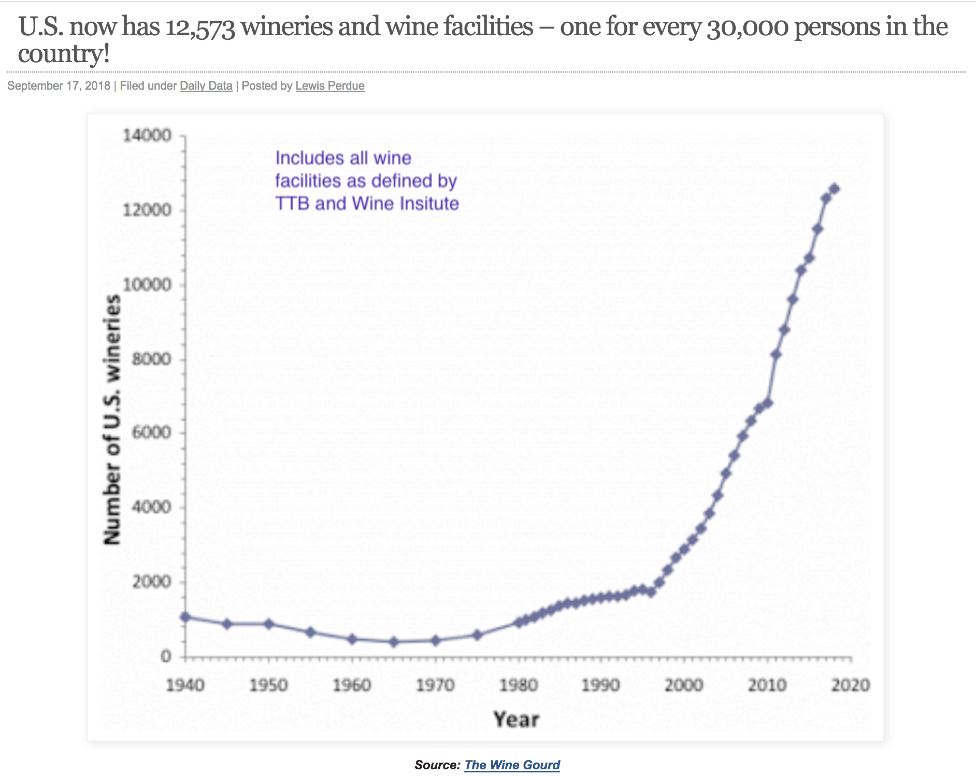 Smoky Summer Affects Willamette Valley and Mendocino County The Oregon Wine Board reports that the state’s wine growers are employing techniques for mitigating smoke taint including reverse osmosis, alteration of fermentation formats and other measures to restore appealing flavor. Some are resorting to marketing wines that have smoke cherry taste. The truth is that consumers vary in their tolerance for smoke taint (I am very sensitive to it and absolutely hate it). Some winemakers try to say it adds a charming note to wines but I am not buying it for Pinot Noir. Unfortunately, climate change means smoky summers may be more frequent. The Mendocino Complex fires caused dense smoke plumes over many vineyards. Consumers should taste before they buy 2018 Pinot Noir from Mendocino County.
Freeze Your Pinot to Preserve It
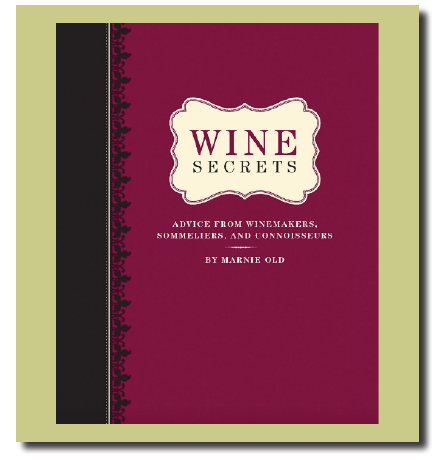 There are many wine preservation systems and methods that slow or prevent oxygenation of wine, but the simplest way to keep opened bottles of wine is to put the cork tightly in the partially consumed bottle and put it in the freezer. When I tell people this, they look astounded and in disbelief. Trust me, you can freeze wine for several months and after defrosting, the wine will taste unchanged. I first learned of this method of preserving opened bottles of wine several years ago when I read Marnie Old’s book, Wine Secrets: Advice from Winemakers, Sommeliers, and Connoisseurs. Master of Wine and Master Sommelier Ronn Wiegand wrote in the book a section titled, “How to Preserve Open Wine (Yes, You Can Freeze It).” Wiegand pointed out that refrigeration, often used by the unknowing to preserve opened bottles of wine, can actually speed the decline of wine. Refrigeration slows the oxidation process but also renders oxygen more soluble. Vacuum devices do not work, and inert gases can only be relied upon for a few days or up to two to three weeks. Freezing wine allows open wine to be kept for months or even years! Wiegand says, “I know it sounds ridiculous, but for more than thirty years, I’ve been freezing opened wine, with incredible results. The bottles must be upright and the cork must be clean. Young wines are most resilient and reds tend to last longer than whites.” It is important that some headroom is left in the bottle to allow for the wine’s expansion. Defrosting a bottle can take several hours, but can be hastened by putting the bottle (sans capsule) in the microwave for a few moments. Here is a recent example. I reviewed the 2015 AldenAlli Sonoma Coast Pinot Noir in April 2018. My wife put the bottle in the freezer after I had finished my critique (94 score by the way). The bottle was hidden and we forgot about it. I pulled it out in early September after five months and it tasted exactly the same or even better compared to last April. Frozen Pinot Noir can also be used to make great popsicles and slushies. |